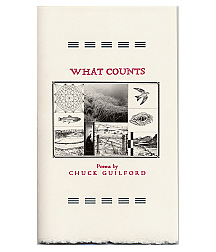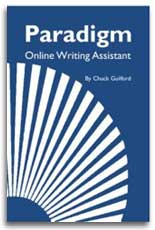Using Tension and Opposition
Wait a minute, you may be thinking. Who needs tension? Tension causes headaches and ulcers. Why create more of that? These are good questions and deserve answers.
Writers use tension and opposition to explore the texture of experience. Most experience contains opposition, which often produces tension, and not all tension is bad, and not all opposition is conflict. In fact, the poet William Blake went so far as to say, "Opposition is true Friendship." He meant that opposition produces energy and excitement, sometimes even harmony.
Learn to recognize tension, to build it, to control and release it according to your purposes. What would a tennis match or a horse race be without opposition? An election? A romance? Even a guitar string isn't much good until it's put under tension by being pulled in opposite directions. But when it's taut, the slightest touch can produce marvelous sounds. Likewise, using opposition to control your essay's dynamic tension can add energy and vigor.
Tension in writing takes many forms and serves many purposes. It can grow from opposition between people, between people and their surroundings, between hopes and realities, between tradition and change. A single essay can use several sources of tension, exploring their interrelationships. As a writer, you should learn to recognize tension, to build it, to control and release it according to your purposes.
Look at something you've already written to see where you've used oppositions, or where you could increase dynamic ten- sion by developing oppositions more fully. Ask questions like the following:
Does this go against what a person would normally expect?
Example: Forrest is terrible in math, but he's getting an 'A' in algebra.
Does this seem out of place in these surroundings?
Example: I noticed that the beautician kept scratching her scalp.
Does there appear to be an internal contradiction?
Example: In order to find yourself you have to lose yourself.
Is this part of a pair of natural opposites?
Example: The grapefruit juice was bitter after the platter of syrupy pancakes.
Is this a challenge or a struggle?
Example: Grandpa announced that he would catch the pig bare-handed.
Is this part of a contest?
Example: Pujols and A-rod shook hands in front of the dugout.
Does the language itself suggest opposition?
Example: Do you mean to suggest that the honorable senator from the great state of Texas is a filthy crook?
Is an important change being made or contemplated?
Example: After January 15th, all of us who couldn't do twenty-five pushups would have to wear yellow gym shorts.
This is just a partial list of possible oppositions, but it should get you going.
Is something funny going on at the same time as something sad?
Is something trivial going on at the same time as something important?
Opposition and tension add energy and force to your writing. The better you get at exploring, extending, and interrelating oppositions, the more engaging your writing will become.
Activity
5.2 Read back over the story sketch you wrote for Activity 5.1. Look for ways to experiment with the information flow to your readers. Some techniques you can use are Compression and Expansion, Beginning in the Middle and Flashing Back, Foreshadowing and Withholding Information, Thickening the Plot, Using Tension and Opposition. Use them alone or in combination to shape your narrative so that it achieves your purposes and satisfies your readers. Write yourself a note describing at least two changes, you could make in your first draft. Tell how you could incorporate these changes and how they might alter the story's overall effect.



